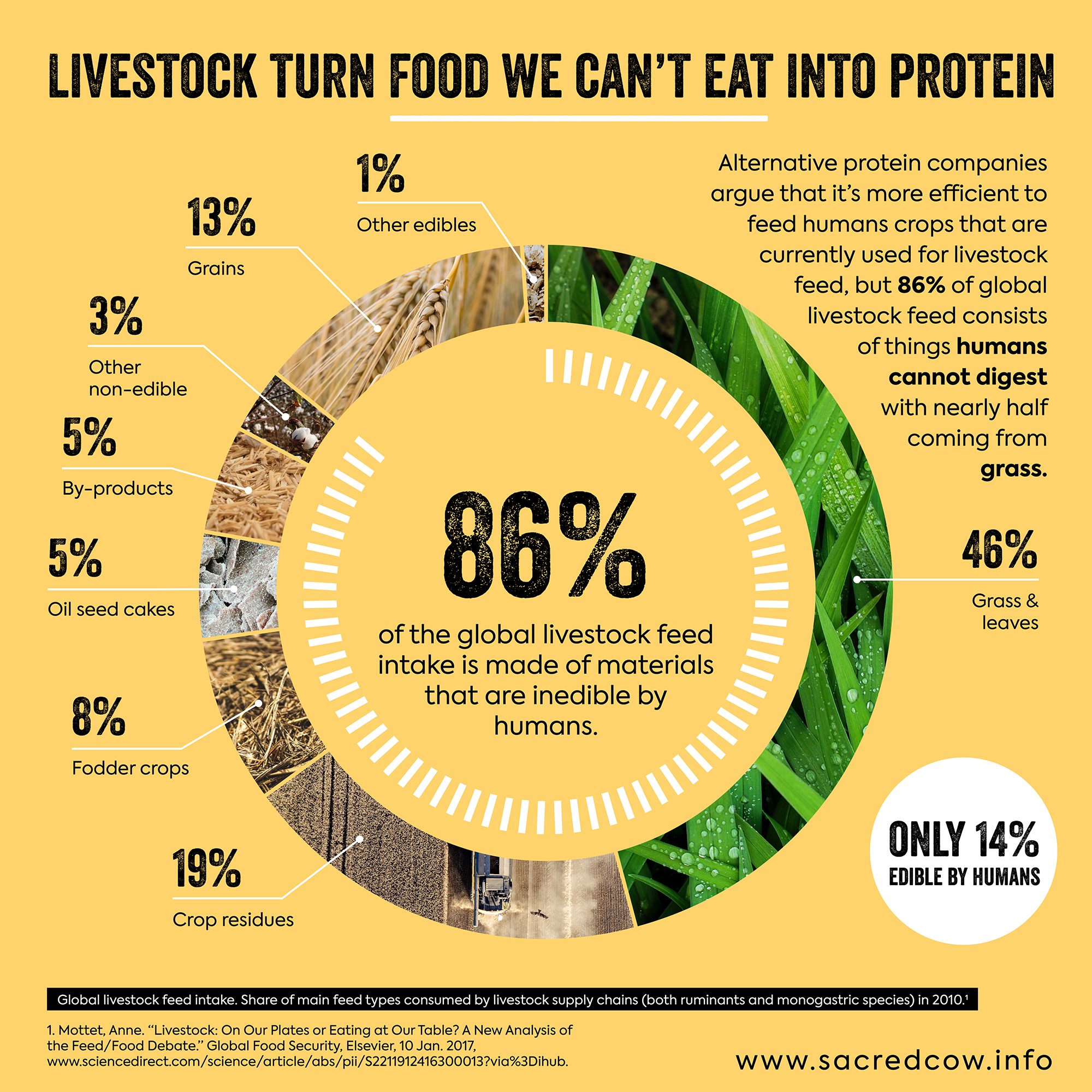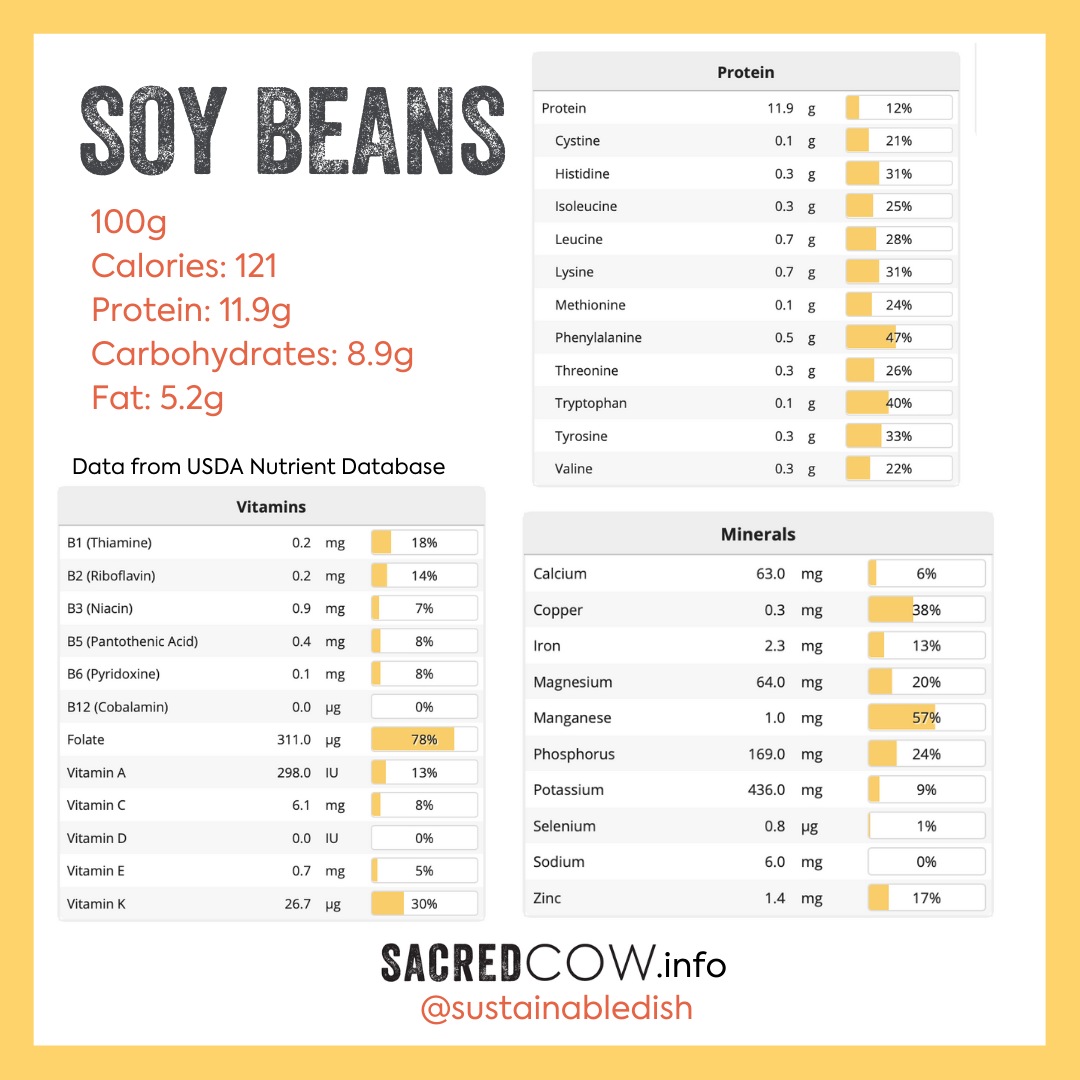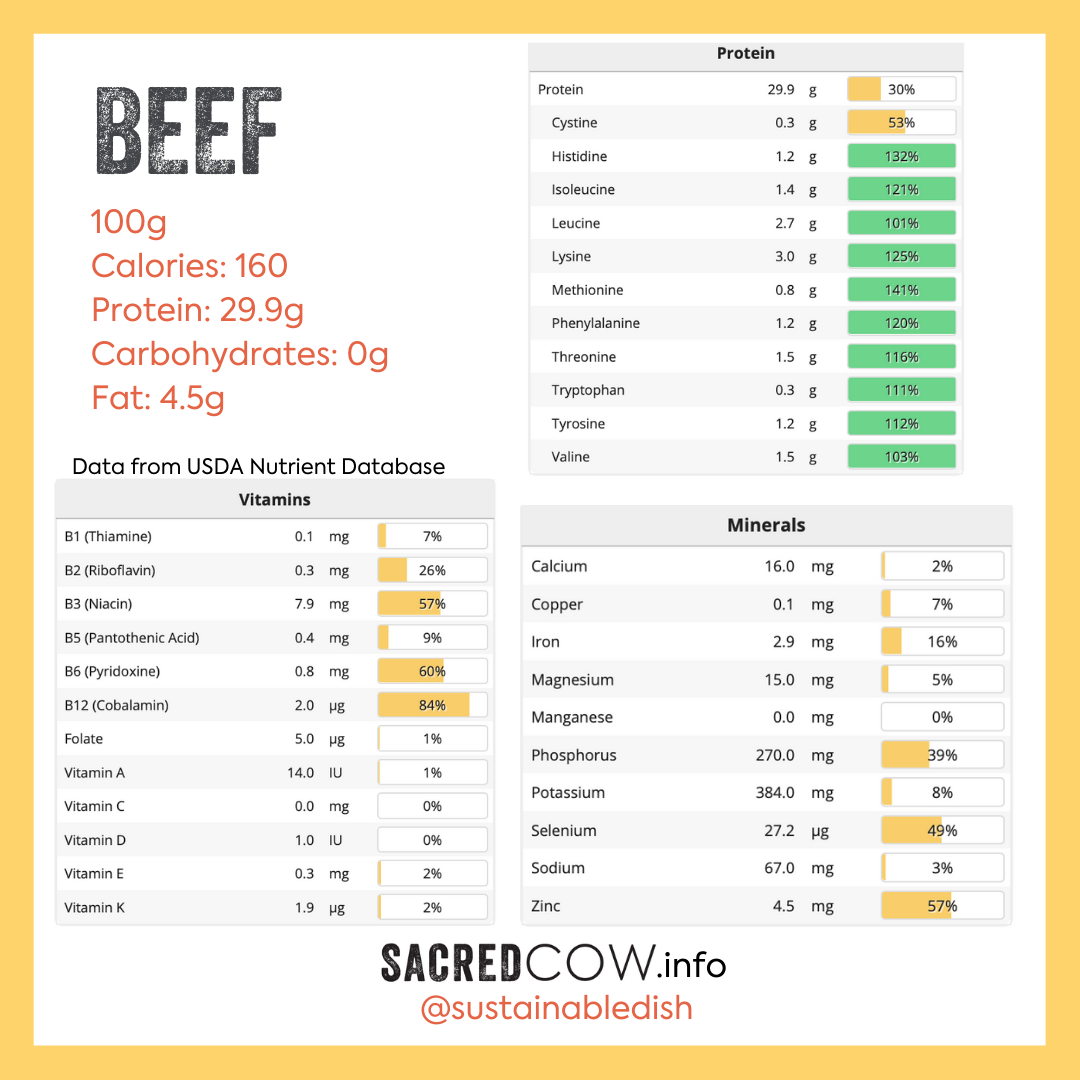Only a small % of what cattle eat is grain. 86% comes from materials humans don’t eat.
The plant-based industry wants you to believe that crops, like soy, corn, and barley, are mostly being fed to livestock, but according to the United Nations FAO, grain makes up only 13% of global livestock feed.
Only 13% of global animal feed (all animals for food, including chickens, pigs and cattle) is comprised of grain crops, according to United Nations FAO research, and only 32% of overall global grain production in 2010 was used to feed livestock.
A staggering 86% of global livestock feed consists of materials that we cannot digest as humans, like crop residues including stover and sugarcane tops. Pigs and chickens are also monogastrics (like humans) and cannot digest these products either. However, ruminant animals like cattle, sheep, and goats can safely consume these materials and turn them into nutrient-dense protein for humans.
When looking at what only ruminants eat, the numbers are even lower for grain, at only 10% of the diet for cattle, globally. Grass and leaves makes up 57.4% of global ruminant feed ration. The rest is inedible by humans, like “crop residue” such as corn stalks.
A wide variety of agricultural byproducts make excellent livestock feed. When sugar is made from sugar beets, for example, an energy-dense, fibrous pulp is leftover, and when corn is converted to ethanol it yields a high-fiber, high-protein residue called distillers grains. If we were not to convert these products to protein by feeding them to livestock, the other options for dealing with these materials include creating a composting matrix, which releases water and produces greenhouse gases or allowing the materials to oxidize in a landfill. Ruminant animals, therefore, provide an important upcycling service in our food system.
The same study concluded that 46% of global livestock feed comes from grass and leaves. When examining grazing and mixed systems, however, the study concluded that about 90% of ruminants’ diet comes from roughage like leaves, grass, silage, and crop residues. Through regenerative agriculture practices like rotational grazing, livestock can actually help sequester carbon while also improving and soil health.
“Cattle can actually sequester carbon while improving soil health.”
Critics of meat consumption often argue that it takes too much feed to produce animal protein and that we should instead simply feed humans what we are feeding livestock. This argument fails to account for the large percentage of non-human edible materials that are fed to livestock around the world.
A number of sources claim that it takes 12-pounds to 20-pounds of feed to produce one pound of beef. That same 12lbs to 20lbs of feed, however, could not simply be shifted over to our plates if livestock were one day removed from our food system.
But even if we shifted animal feed like soy to human food, one pound of soy is not nutritionally equivalent to one pound of beef. Steak has more than twice the protein that soybeans have, and animal protein is much more bioavailable (absorbable) than plant-based proteins. A 100g serving of steak also has 84% of the daily recommended intake (DRI) of vitamin B12, which is absent in plants and vital for brain health. Zinc is another nutrient difficult to find in plant foods, and 100g of steak contains 57% of the DRI.
If we were to compare steak to corn, the difference is even more dramatic, in favor of steak. So, with a feed conversion ratio of approximately 2:1 (2lbs of grain per 1lb of steak), beef is the clear winner from a nutrient standpoint. Many argue that humans should simply eat crops directly. Below is twice as much corn as the steak graphic above. Let me know if you prefer 200g of corn instead of 100g of steak. The numbers don’t lie.
Proponents of plant-based protein also fail to address how our current monoculture systems of intensive corn and soybean production have caused a number of environmental challenges. Commodity crop production in the Midwest has been linked to a decline in soil health due to increased runoff and lack of soil organic matter. Farming the same handful of crops in a never-ending rotation also leads to depletion of important soil nutrients over time and degrades the soil’s structure. Soil scientists describe optimum soil texture as cottage cheese-like, allowing it to trap water and filter water below the surface.
The use of chemical inputs like pesticides, fungicides, and herbicides has also taken its toll. Pesticide usage has led to pollinator decline while fertilizer runoff has created a dead zone in the Gulf of Mexico the size of Connecticut, as a few examples.
The United Nations FAO paper cited in the infographic also concluded that 80% of the global agricultural land allocated to feed production consists of grassland and that over half of the grassland cannot be converted to cropland. Based on these figures and its research regarding cattle production globally, the paper calculated that 57% of land used to produce feed is not suitable for food production.
Those arguing for the elimination of animals from our food system are failing to recognize that livestock are incredible nutrient “up cyclers”. It’s far more efficient from a calorie perspective and from a nutrition perspective to eat 1lb of meat vs. of 2lbs of grain. With approximately 70% of Americans overweight or obese, we should be considering which foods deliver the best nutrition for the lowest amount of calories. And with cropland in short supply, it’s critical that we look at the most efficient yet sustainable ways to utilize it.
We need less crops and more grazing animals.
Cattle can turn food we can’t eat into nutrient dense protein, utilizing land we can’t crop while performing important ecosystem functions like increasing biodiversity and sequestering carbon.




